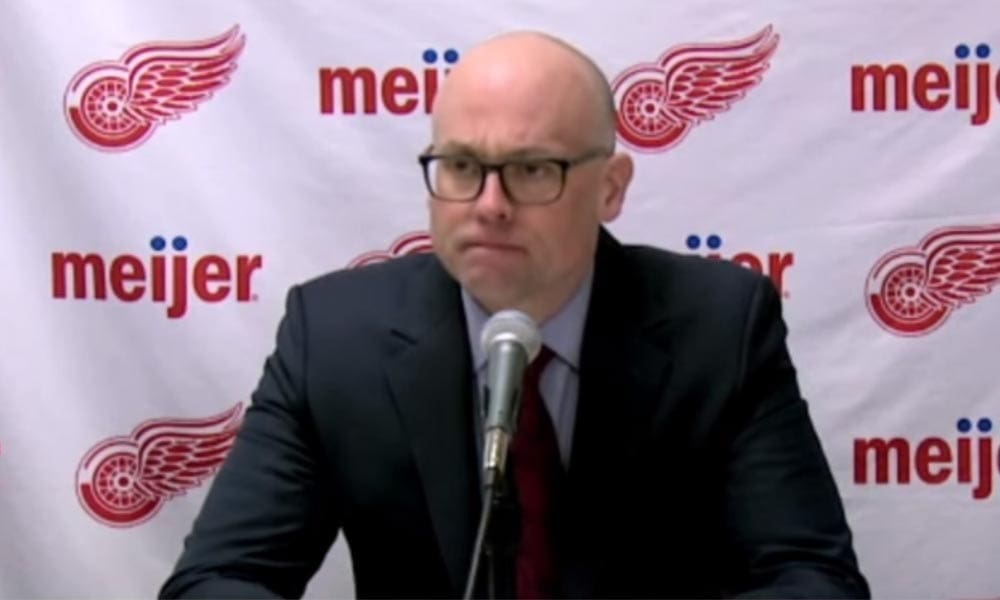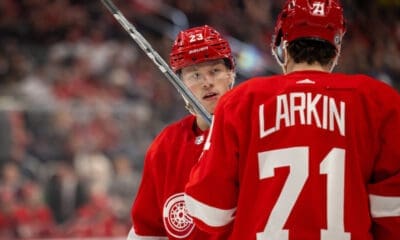Detroit Red Wings
Red Wings By the Numbers: A Decade’s Worth of Power Play Analysis Pt 2

In the second part of Red Wings By the Numbers, DHN will take a look at the personnel and corresponding numbers for the power play. It’ll go back to the 2011-2012 season, the last that featured the great Nick Lidstrom. The report will be broken up into three parts with part one already running on Saturday. Today we look at Part 2, which focuses on the “last gasp” of contention Detroit enjoyed before the rebuild began.
- The Last Gasp: 2013-14 to 2015-16 (Part 2) – Today
- Rebuilding: 2016-17 to 2022 (Part 3) – Monday
Power Play Numbers At a Glance from 2013-14 to 2015-16
| Season | PP% | NHL Rank | Difference | PP Goals | PP Chances |
| 2013-14 | 17.73% | 18th | -0.65% | 50 | 282 |
| 2014-15 | 23.81% | 2nd | 6.08% | 70 | 294 |
| 2015-16 | 18.80% | 13th | -5.01% | 50 | 266 |
2013-14 Red Wings
Detroit reloaded with some new acquisitions–signing Florida forward Stephen Weiss while letting Valtteri Flippula walk to Yzerman-led Tampa Bay. The move worked for the Bolts–not so much for Detroit. Renney was still in charge of the power play but there was slippage from the 2013 season. Albeit a lower drop, the Red Wings would stumble through the season fighting injuries to Henrik Zetterberg, Johan Franzen, and Pavel Datsyuk, all main players in Detroit’s scoring plan.
The result would be a five game loss to Boston in the first round, one that certainly had many pundits if the aging Red Wings were close to seeing their playoff streak end.
Renney’s numbers from 2013-14 would fall about -.65% from the 2013 season. Gone were some key players (Damien Brunner to name one), but players like Dan Cleary, and Franzen were already seeing dips due to age or injury. Franzen, however, led the team in power play goals in his time that he was on the ice. Newcomer Danny Alfredsson provided some offense and Gustav Nyquist, Todd Bertuzzi, and Nik Kronwall all contributed, too.
But it was still a slight decrease for sure, and a new pair of eyes would give Detroit its most potent power play since the 2008-09 season.
2014-15 Red Wings
Tom Renney was replaced with Jim Hiller and the results were significant. In Hiller’s system, the Red Wings had a power play efficiency of 23.81%, bested only by Washington’s 25.32%. It was the first time Detroit’s man advantage was in the top five in nearly four seasons. It would also be the last time Detroit would boast a top five power play.
Hiller’s system was a 1-3-1 power play, which utilized the individual talent of Detroit’s scorers. Crisp passes, constant movement and one defenseman running the point punctuated the HIller Power Play philosophy. What it earned was Detroit’s best output since 2008-09, when the Red Wings led the league in power play efficiency.
Hiller would spend just one year with Detroit before then head coach Mike Babcock left to take over in Toronto. A season later, the Red Wings power play would take another turn down.
Personnel was a big part of the jump and Hiller was able to utilize the personnel well. Gustav Nyquist, (14 PP goals), Tomas Tatar (9 PP goals) Justin Abdelkader and Pavel Datsyuk (8 PP goals) accounted for 39 of Detroit’s 70 goals. The Red Wings had such a spread out attack that Zetterberg and Johan Franzen, whose career was being severely affected by injury, were not needed as heavily for scoring.
Watching these highlights of Tatar’s goals or even Nyquist’s shows a power play that relied the quick passing but also the constant movement to keep the opposing kill on its heels. Detroit would come minutes from having a 3-1 series lead against Tampa Bay in the 2015 playoffs, but as would become custom, the Lightning would find a way to win. The Red Wings would fall in seven games and changes would arrive.
Unfortunately for Detroit, Hiller would follow Babcock to Toronto and the Red Wings power play would never see production like this since.
2015-16 Red Wings
The last season of making the playoffs, the Red Wings would back in at the end of the 2015-16 campaign and be knocked out by Tampa Bay (again), this time in five games. Detroit was now under the watchful eye of Jeff Blashill, hired to transition the Red Wings from Babcock as well as having younger players on the roster.
Dylan Larkin’s rookie debut saw 23 goals, but the Red Wings took some steps back. Mike Green was brought in to solidify the blue line–and because he was an offensive minded d-man who could keep the momentum on the man advantage. Pat Ferschweiler took over the duties, and Detroit tumbled over five percent in terms of efficiency.
It wasn’t as if the personnel wasn’t talented. Dastyuk (8 goals), Tatar and Nyquist (7 goals) Abdelkader (6 goals) and Green (5 goals) contributed 33 of the Red Wings’ 50 goals. Larkin and Brad Richards each chipped in four on the man advantage.
But the system Freschweiler used changed from Hiller’s 1-3-1 and installed a more traditional umbrella system that had a net front presence with two defensemen at the point. The power play would doom Detroit in its five game loss to Tampa, and Ferschweiler would be replaced following the season and John Torchetti would be the fourth coach in four seasons to be running the power play.
Though there would be new ideas, the Red Wings power play would struggle more as a rebuild mindset took over and the talent needed to drive a successful power play was shipped out.
















